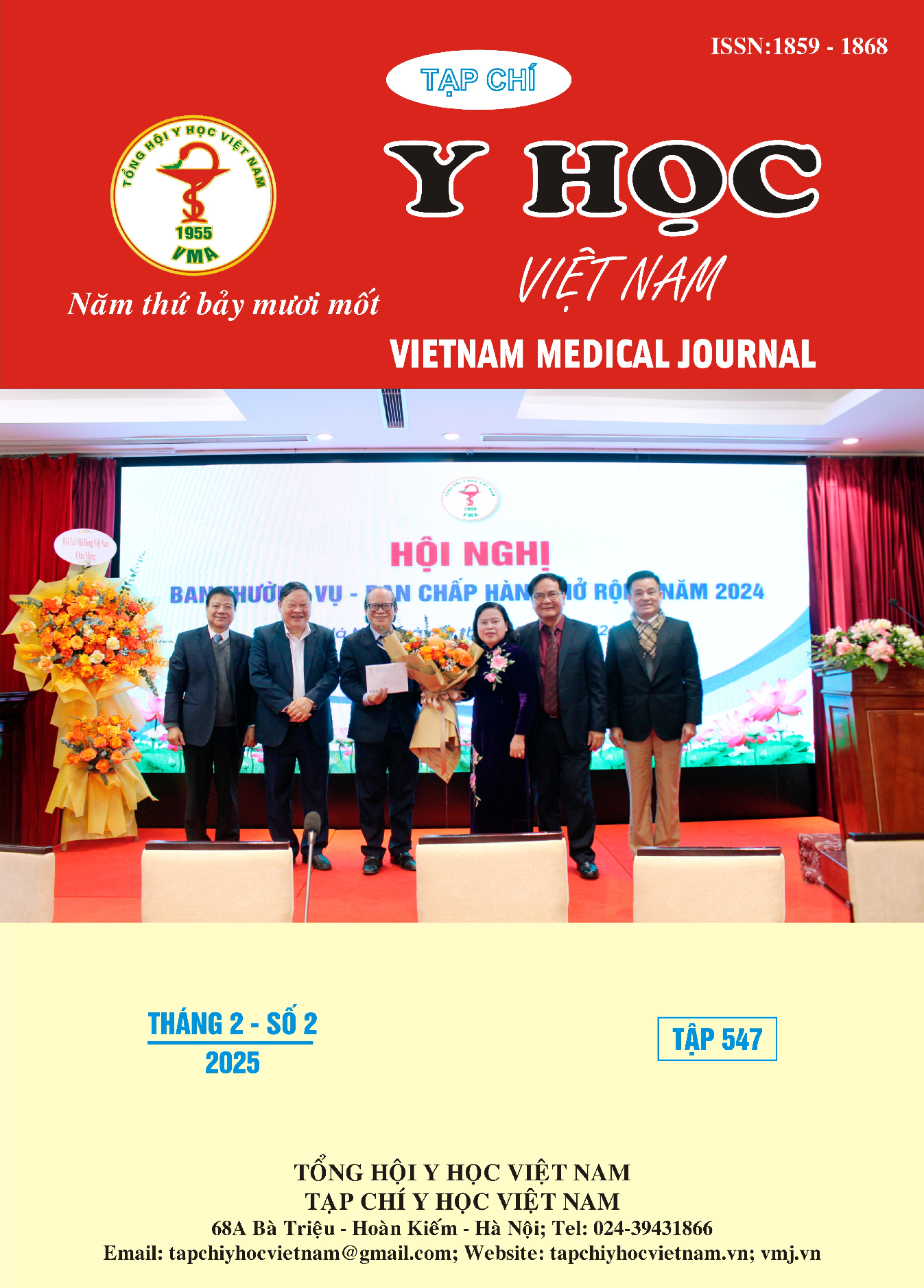KEYSTONE FLAP: VERSATILE FLAP FOR RECONSTRUCTION OF NON- HEALING WOUND OF LIMBS
Main Article Content
Abstract
Background: Surgeons are constantly seeking solutions for covering limb defects. They aim to find simple techniques that are easy to reconstruct and can be performed in a short period. The keystone flap may be a reasonable answer as it is performed with simple techniques, requires little time, has a high survival rate, and is easy to reconstruct, capable of covering various limb defects. The purpose of this study is to evaluate the effectiveness of using keystone flaps in covering non-healing wounds in the upper and lower limbs. Materials and Methods: This prospective study was conducted on 5 patients who received keystone flaps for different defects from 2022 to 2023. Patient demographics, medical history, comorbidities, surgical indications, characteristics and locations of the defects, and complications were monitored, evaluated, and presented as a case series study. Results: Our study recorded patient ages ranging from 28 to 65 years with an average of 44.6 years. Among the defects, 3 were due to trauma (60%), 1 due to tumor excision (20%), and 1 due to the excision of a callus ulcer on the foot (20%). The largest defect covered by the flap in our study was 10x8 cm, and the smallest was 2x3 cm. The average surgical time was 36 minutes (ranging from 20 to 60 minutes). Four flaps were performed to cover lower limb defects (70%), and 1 flap for an upper limb defect. One case of partial necrosis of the flap was noted. Patients stayed in the hospital for an average of 1.5 days. All patients were observed until their wounds stabilized and healed. Conclusion: The keystone flap can be safely utilized to cover many types of limb defects with minimal pain, the potential for sensory recovery, and high aesthetic results, without requiring complex microsurgical techniques and with a short surgical time.
Article Details
Keywords
Keystone flap, perforator flap, non-healing wound, limb reconstruction.
References
2. JS Khouri, BM Egeland, SD Daily, MS Harake, S Kwon, PC Neligan, et al. The Keystone Island flap: Use in Large Defects of the Trunk and Extremities in Soft tissue Reconstruction. Plastic & Reconstructive Surgery. 2011;127(3):1212–21.
3. SP Bhat. Keystone flaps in coloured skin: Flap technology for the masses? Indian J Plast Surg. 2013;46(1):36–47.
4. MD Moncrieff, JF Thompson, JR Stretch. Extended experience and modifications in the design and concepts of the keystone design island flap. J Plast Reconstr Aeshtet Surg. 2010; 63(8):1359–63.
5. P Pelissier, H Gardet, V Pinsolle, M Santoul, FC Behan. The keystone design perforator island flap. Part II: clinical applications. J Plast Reconstr Aesthet Surg. 2007;60(8):888–91.
6. M Pignatti, M Pasqualini, M Governa, M Bruti, G Rigotti. Propeller flaps for leg reconstruction. J Plast Reconstr Aesthet Surg. 2008;61(1):777–83.
7. HC Chen. Precautions in using keystone flap. J Plast Reconstr Aesthet Surg. 2010;63:720.
8. P Natalie, DL Gabriel, C Abhishek, P Sarah, H Christopher. The Keystone Perforator Island Flap: Review of Utility and Versatile Clinical Applications. Plast Reconstr Surg Glob Open. 2024 Feb 6;12(2):e5556.


